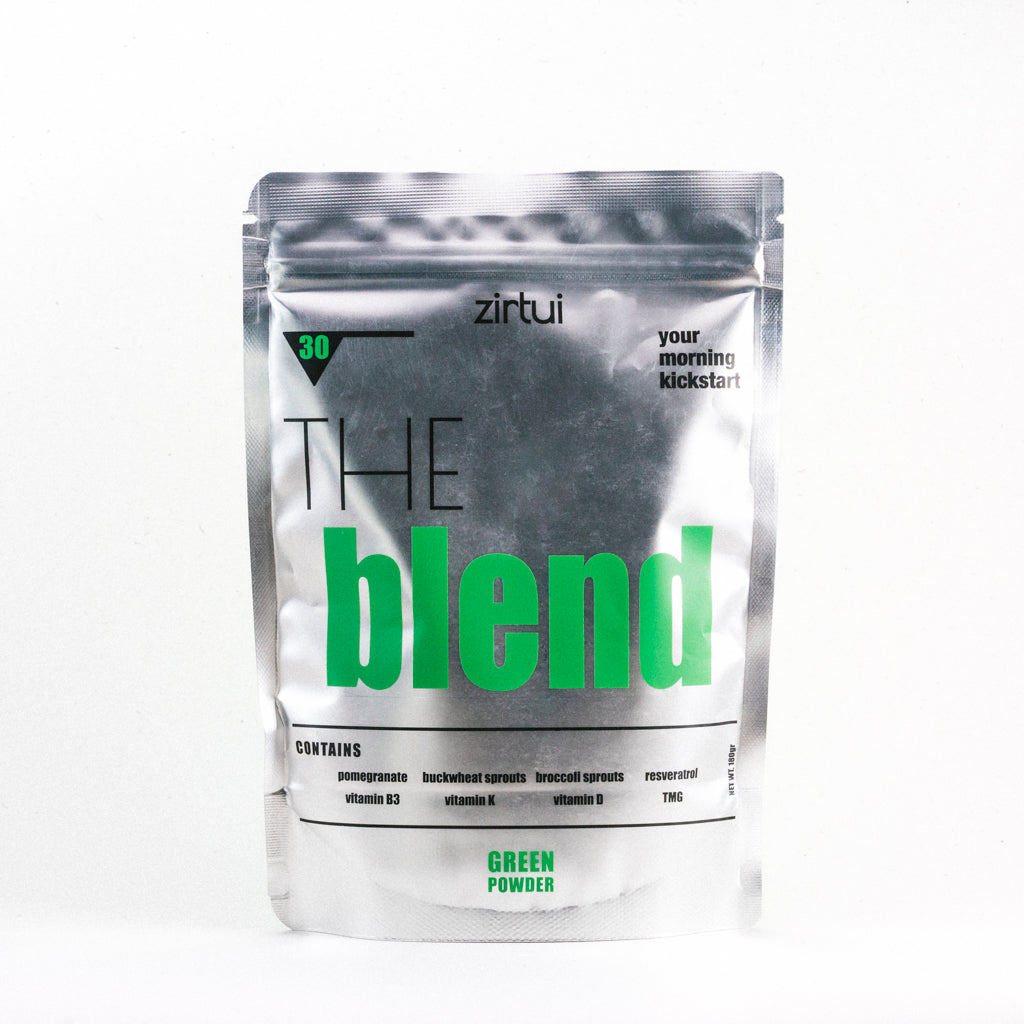
Faire de l'exercice pendant une vague de chaleur : comment rester actif et en sécurité par temps chaud par Jolien Durwael
L'été et le soleil nous invitent à sortir, mais pendant une vague de chaleur, rester actif peut soudainement devenir un défi. On transpire davantage, on se fatigue plus vite et son rythme cardiaque s'accélère. Pourtant, il n'est pas nécessaire d'abandonner complètement son activité physique. Dans ce blog, vous découvrirez comment rester actif de manière intelligente, sûre et efficace , même lorsque le mercure dépasse les 30 °C.
Pourquoi la chaleur est un défi pour votre corps
Faire de l'exercice par temps chaud oblige votre corps à fournir un effort supplémentaire pour se rafraîchir. L'effort physique augmente la température corporelle, et par temps chaud, votre système de refroidissement (transpiration et augmentation du flux sanguin vers la peau) fonctionne déjà à plein régime.
Des recherches montrent qu’à des températures supérieures à 30 °C, votre fréquence cardiaque pendant le même effort peut être de 10 à 15 battements par minute plus élevée que la normale (Nielsen et Nybo, 2003).
Si vous ne restez pas correctement hydraté ou si vous ne dépassez pas vos limites, vous risquez d'être plus sujet à :
* Déshydratation
* Étourdissements ou fatigue
* Fréquence cardiaque ou pression artérielle élevée
* Stress thermique ou même coup de chaleur
Comment la chaleur affecte vos performances sportives
La chaleur affecte non seulement votre sécurité, mais aussi vos performances physiques et mentales. Voici un bref aperçu :
1. Efforts courts ou prolongés
* Les activités courtes et explosives (comme le sprint ou la musculation) peuvent en fait bénéficier de muscles plus chauds et d’une meilleure circulation au début.
* Cependant, lors d’une activité répétée ou prolongée (comme la course à pied ou le vélo), les performances peuvent chuter rapidement.
Pourquoi ? Une fatigue plus rapide, une activation musculaire réduite et une fréquence cardiaque plus élevée à charge de travail égale (Nybo et al., 2014).
2. Effets mentaux et psychologiques
* Un environnement chaud (environ 30°C ou plus) affecte non seulement votre corps mais aussi votre résilience mentale .
* Le stress accru, le manque de concentration, l’irritabilité et les sautes d’humeur sont plus courants, même sans effort physique intense.
Même les entraînements légers peuvent sembler plus difficiles en cas de chaleur extrême en raison de la pression mentale supplémentaire exercée sur votre système.
9 conseils intelligents pour faire de l'exercice en toute sécurité pendant une vague de chaleur
1. Choisissez les moments les plus frais de la journée
Évitez toute activité entre 11 h et 17 h, lorsque le soleil est à son apogée et que le risque de surchauffe est maximal. Les meilleurs moments pour bouger sont tôt le matin ( entre 5 h 30 et 9 h ) ou après 20 h , lorsque les températures baissent et que le soleil est moins intense.
Ces moments procurent un refroidissement naturel, contribuant à maintenir votre rythme cardiaque et votre température corporelle à un niveau bas , rendant votre entraînement plus sûr et plus agréable. Notez que pour certaines personnes, faire de l'exercice tard le soir peut perturber le sommeil, surtout en cas d'activité intense ou stimulante. Dans ce cas, privilégiez des mouvements doux comme la marche ou les étirements pour vous endormir en douceur.
2. Réduisez votre intensité, pas votre intention
Pas besoin d'une séance d'entraînement intense pour bénéficier de bienfaits pour la santé. En période de canicule, privilégiez les activités douces : marche à l'ombre, yoga doux, natation ou vélo lent.
Les recherches montrent que l’exercice modéré dans la chaleur (à faible intensité) améliore toujours la circulation sanguine, la régulation de la glycémie et l’humeur (Cheung et al., 2000).
3. Habillez-vous légèrement et protégez-vous
Portez des vêtements amples, légers et respirants, fabriqués à partir de matières naturelles comme le coton ou le bambou. Choisissez des couleurs claires qui reflètent la lumière du soleil. N'oubliez pas votre chapeau, vos lunettes de soleil et votre crème solaire : votre peau joue également un rôle essentiel dans la régulation de la température.
4. Buvez avant, pendant et après l'exercice – et refaites le plein d'électrolytes
N'attendez pas d'avoir soif. Pendant une vague de chaleur, vous perdez non seulement des liquides par la transpiration, mais aussi des électrolytes comme le sodium, le potassium et le magnésium, des minéraux essentiels au fonctionnement musculaire, à la conduction nerveuse et à l'hydratation.
Alors, ne vous contentez pas de boire de l'eau : faites également le plein d'électrolytes. Vous pouvez utiliser :
* Eau électrolytique maison (voir recette ci-dessous)
* Eau de coco non sucrée
* Une pincée de sel + citron + miel dans l'eau
* Poudres électrolytiques de qualité sans additifs artificiels
Une transpiration excessive sans reconstitution des électrolytes peut provoquer des maux de tête, des crampes musculaires ou des étourdissements, même si vous buvez suffisamment d'eau.
Eau électrolytique maison (recette de 1 litre) :
* 1 litre d'eau plate ou gazeuse
* Jus d'½ citron ou citron vert
* ¼ cuillère à café de sel de mer ou de sel celtique
* 1 cuillère à café de miel ou de sirop d'érable (facultatif, pour le goût et l'absorption)
* (Facultatif : quelques feuilles de menthe ou une tranche de gingembre)
Mélanger et conserver au frais. Idéal pendant ou après un déplacement par temps chaud.
5. Choisissez des environnements de refroidissement
Faire de l'exercice ne signifie pas forcément s'exposer au soleil. Pensez à :
* Marcher en forêt ou dans un parc (jusqu'à 5°C plus frais que dans les zones urbaines)
* Natation ou aquajogging en eau libre ou en piscine
* Parcs urbains ombragés ou salles de sport couvertes
6. Écoutez votre corps, pas votre compteur de pas
Par temps chaud, prendre soin de soi est plus important que de faire des exercices . Fatigue, nausées ou vertiges sont des signes qu'il faut se reposer. Votre corps travaille déjà dur pour se refroidir ; ajouter du stress ne servira à rien.
Des symptômes comme la chair de poule, des maux de tête violents ou des palpitations cardiaques en cas de chaleur sont des signes avant-coureurs. Recherchez l'ombre, rafraîchissez-vous et hydratez-vous.
7. Combinez le mouvement avec le refroidissement naturel
L'exercice ne signifie pas forcément « sport ». Pensez méditerranéen :
* Faites une promenade en soirée pieds nus sur l'herbe
* Faites des étirements légers sur une terrasse fraîche
* Allez au marché à vélo lentement au lieu de prendre la voiture
* Faites une pause bain de pieds froid pendant la journée
Un mouvement doux soutient votre système lymphatique, votre glycémie, votre humeur et votre sommeil, même sans intensité élevée.
8. Prenez un bain ou une douche tiède (pas chaude) le soir pour vous rafraîchir
Cela peut paraître paradoxal, mais un bain ou une douche tiède (et non brûlante !) le soir contribue réellement à rafraîchir le corps . La chaleur dilate les vaisseaux sanguins et la peau libère davantage de chaleur. Dès que vous sortez, votre température corporelle baisse plus rapidement, favorisant la relaxation et préparant votre corps au sommeil.
Des études montrent qu’un bain chaud 1 à 2 heures avant le coucher améliore la qualité du sommeil, vous aide à vous endormir plus rapidement et favorise même la régulation de la température dans des conditions chaudes (Haghayegh et al., 2019).
Remarque : L’eau doit être agréablement chaude, et non brûlante. N’oubliez pas de bien vous hydrater ensuite.
9. Ajustez vos attentes – Soyez flexible dans votre façon de bouger
Une vague de chaleur n'est pas le moment de battre des records personnels ou de se dépasser. Vous n'êtes pas obligé de vous entraîner comme d'habitude. Remplacez votre entraînement habituel par une activité plus douce , comme une séance d'étirements relaxante, une séance de yoga rafraîchissante ou une promenade en pleine nature.
Il ne s'agit pas de performance, mais de rester actif de manière à soutenir votre corps au lieu de l'épuiser. Considérez cela comme un « ralentissement » naturel dont votre corps a peut-être vraiment besoin.
Bonus : Sous la chaleur, votre corps a des priorités différentes ; bougez en conséquence.
En cas de chaleur extrême, votre corps recherche principalement la fraîcheur, le repos et un équilibre hydrique . Cela ne signifie pas que vous soyez paresseux ou que vous abandonniez vos objectifs sportifs. Cela signifie que vous êtes à l'écoute de ce dont votre corps a réellement besoin à ce moment précis, et c'est un comportement sain.
Sources
- Nielsen, B., & Nybo, L. (2003). Modifications cérébrales pendant l'exercice par temps chaud. Médecine du sport, 33(1), 1–11.
- Nybo, L., Rasmussen, P., et Sawka, MN (2014). Performances à la chaleur : facteurs physiologiques importants pour la fatigue induite par l'hyperthermie. Comprehensive Physiology, 4(2), 657–689.
- Cheung, SS, McLellan, TM, et Tenaglia, S. (2000). La thermophysiologie du stress thermique non compensable. Physiologie et comportement, 70(1-2), 87–96.
- Racinais, S. et al. (2015). Recommandations consensuelles sur l'entraînement et la compétition par temps chaud. Scandinavian Journal of Medicine & Science in Sports, 25(S1), 6–19.
- Haghayegh, S. et al. (2019). Les effets du bain sur le sommeil : revue systématique et méta-analyse. Sleep Medicine Reviews, 46, 124–135.
- Stutz, J. et al. (2019). Effets de l'exercice en soirée sur le sommeil chez des participants en bonne santé : revue systématique et méta-analyse. Médecine du sport, 49(2), 269–287.

